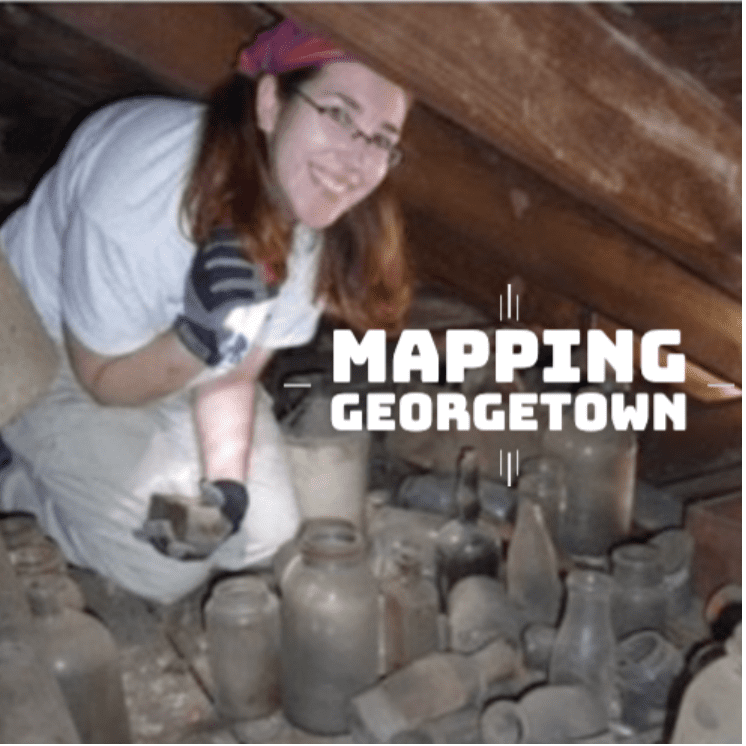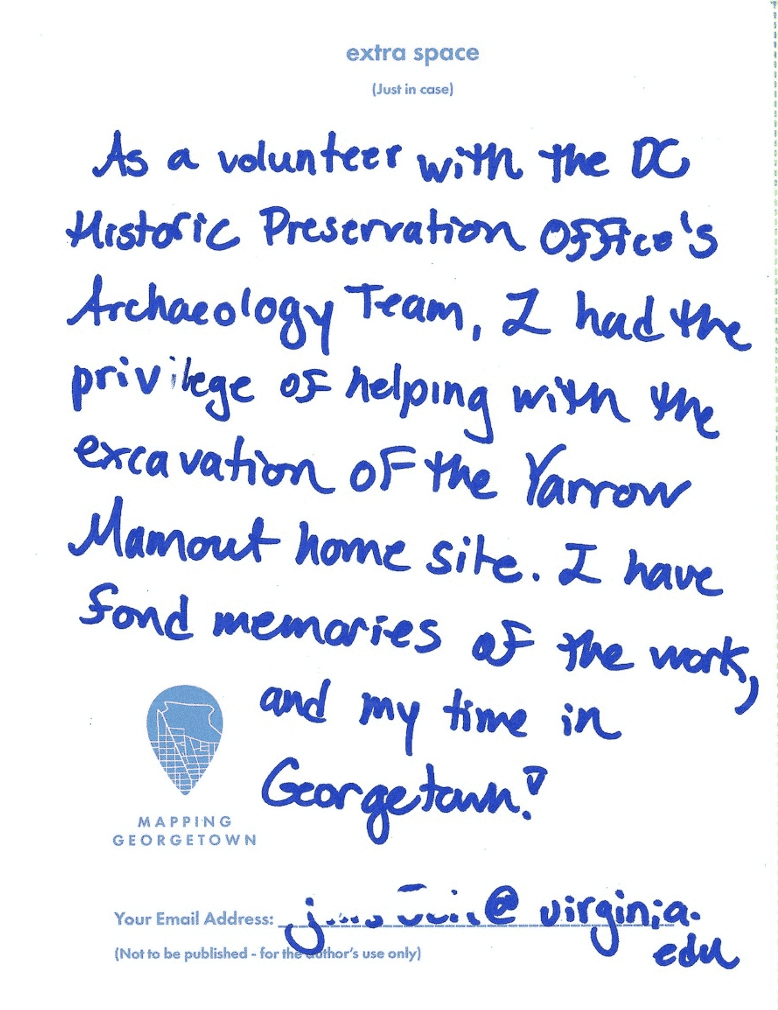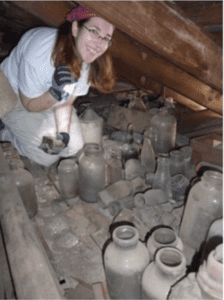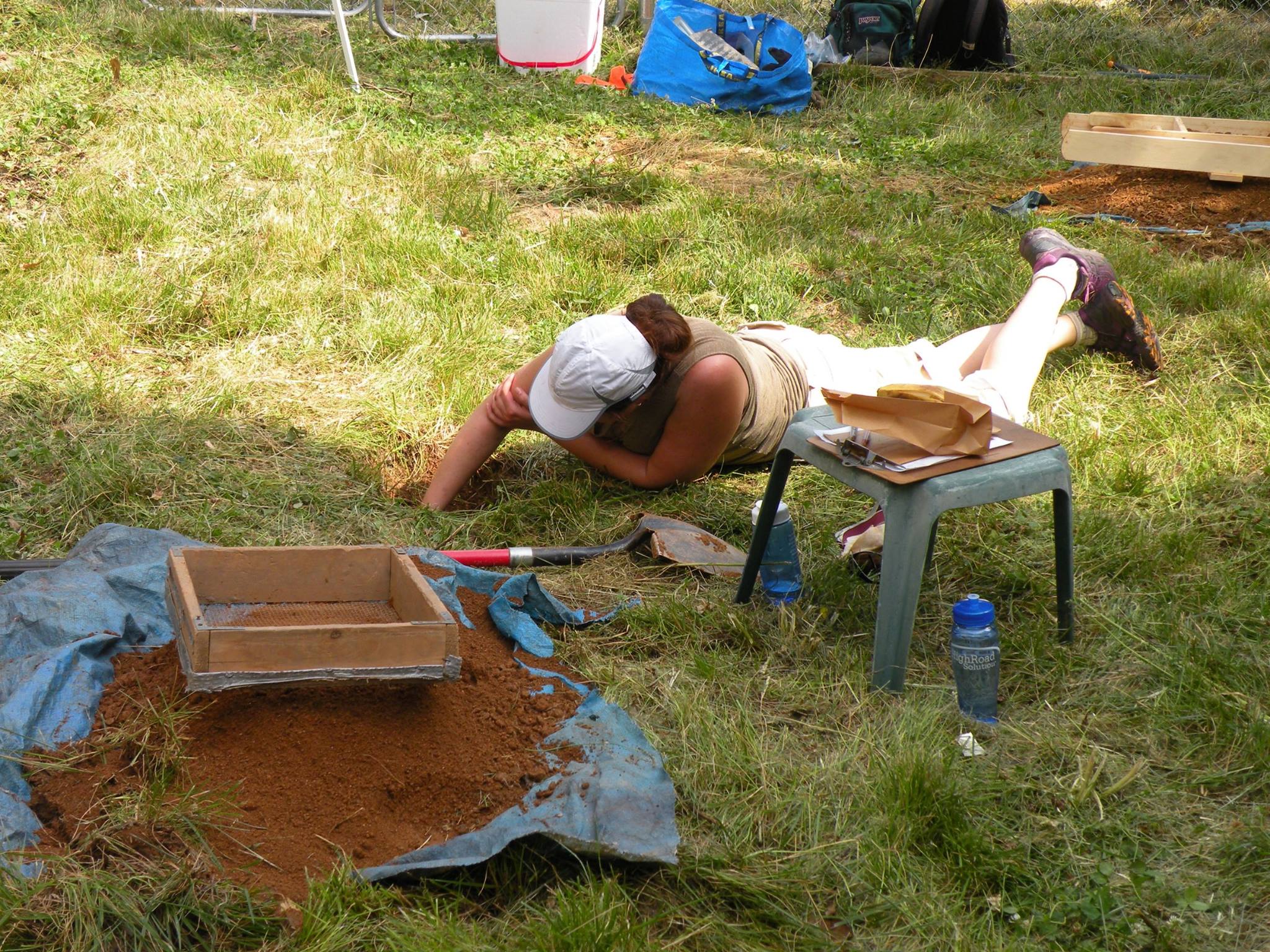Mapping Georgetown: The Passions of Preservation
By • November 22, 2021 0 868

In this season of thankfulness, we’re so grateful to receive so many passionate recollections of our local history. Clearly, we’re not the only ones with a passion for preservation.
Today, we’ll think back once again to the reactions we received from eyewitnesses to the infamous 2007 fire at the Georgetown Neighborhood Library. We can feel Robyn Hickey’s panic at the site of the billowing fire from her beloved library and of Jerry McCoy’s devotion to the precious collection he stewards, including the 1822 portrait of Yarrow Mamout, Georgetown’s most intriguing businessman who had come to America at age 16 in shackles as an enslaved person. As with all things Mapping Georgetown, one story naturally connects with another…
In pursuit of the Yarrow Mamout story, we feature today a delightful contribution from Jennifer Saunders who participated as a volunteer with the D.C. Historic Preservation Office’s archeology team in the excavation of Yarrow Mamout’s homesite at Dent Place in Georgetown. Saunders gives us a peak at the passion of the archeologists when it comes to discovering, identifying and preserving our uniquely historic neighborhood’s deepest realms of hidden history. She describes the “powerful memory” of working on this particular project while musing, “how many incredible peoples’ stories must be underfoot at all times.”

A story-map from Jennifer Saunders, a volunteer for the D.C. Historic Preservation Office’s archeology team. Photo: Courtesy Mapping Georgetown.
“As a volunteer with the DC Historic Preservation Office’s Archaeology Team, I had the privilege of helping with the excavation of the Yarrow Mamout home site. I have fond memories of the work, and my time in Georgetown,” Saunders writes.
In his March 26, 2015 article in The Georgetowner, Robert Devaney describes Yarrow Mamout and his homesite. “The property at 3324 Dent Place NW was the home – and possibly the final resting spot – of Yarrow Mamout (c. 1736–1823). Enslaved in West Africa and brought to America as a young man of 16, Yarrow (his surname) was freed at age 60 and chose to stay in Georgetown for the rest of his life. He was a master businessman and investor. The home he built on Dent Place is no longer standing, but the property still exists…”

Jennifer Saunders working on an archeological dig. Photo by Susanna Raab of The Smithsonian.
Here’s Jennifer’s story:
The project at Yarrow Mamout’s property was the dissertation work of Dr. Mia L. Carey, then at the University of Florida, and was run by Dr. Carey and the DC Archaeology team out of the DCHPO. I was a volunteer, and only came out for a few days over the duration of the project.
That said, as you can tell, it’s a powerful memory for me. It was my first time digging in a true urban setting, and it made me think about how many incredible peoples’ stories must be underfoot at all times, and how lucky we are to get to know the ones we do. If I do have a favorite personal memory, it’s lying on my stomach to reach the depths of an STP, or shovel test pit, the holes that archaeologists dig to help them figure out where to place test units (larger excavation blocks).

Jennifer Saunders at an archeological dig at the Yarrow Mamout homesite. DC Archaeologist Ruth Trocolli and Assistant Archaeologist Chrissy Ames, on behalf of DCHPO, have given permission to use this Facebook photo of the dig.
The excavation produced a variety of items, including a metal cuff link engraved with a tiny crown, pottery shards, clay marbles, an amber glass medicine bottle and animal bones. These items are probably from after the time of Yarrow Mamout, however. The initial prediction of finding actual skeleton Yarrow Mamout bones was 50/50. No conclusive finding of Yarrow’s remains has yet been discovered. Since he was likely buried in a shroud, the chances of locating and identifying his remains may be all the more elusive.
We are so grateful for all of your effort and those of your whole profession. A special thank you to Jennifer Saunders with permission of DC Archaeologist Ruth Trocolli and Assistant Archaeologist Chrissy Ames, for the kindness and generosity of providing this interesting and enlightening story to share! We can only imagine the time, effort, education and precision that comes with this work!
Here are a few fascinating articles about Yarrow Mamout and the Dent place excavation dig:
The first by Debra Bruno for The Washington Post, July 23, 2015 found here.
The second by Michelle Goldchain for DC.Curbed.com, from Nov. 1, 2017 found here.
The third from Christopher Jones of The Georgetowner, from Dec. 3, 2020 found here.
—
This Mapping Georgetown story can be viewed in full at https://mappinggeorgetown.com/2019/12/02/yarrow-mamouts-home-site-dc-historic-preservation-offices-archeology-team-dc-history-conference/.
We encourage you to submit your story to this community collection. Blank templates can be printed from the home page of www.mappinggeorgetown.com or picked up from The Georgetown Public Library.
To learn more about the Mapping Georgetown project see https://georgetowner.com/articles/2021/07/19/marilyn-butlers-vision-for-mapping-georgetown/. If you need any help or assistance, please don’t hesitate to contact Marilyn Butler at: marilyn.butler@gmail.com.
Happy Thanksgiving!

